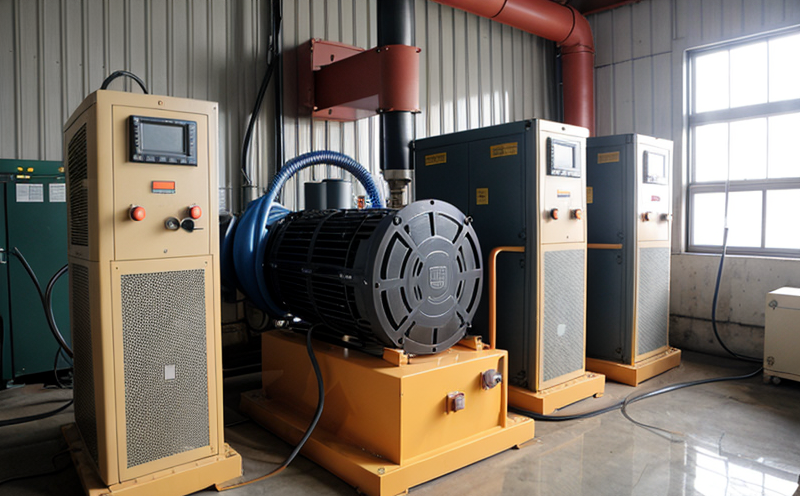ASTM E1417 Liquid Penetrant Testing of Turbine Blades Validation Method Development Test
The ASTM E1417 standard provides a validated method for detecting surface-breaking defects in turbine blades, which are critical components in the power generation industry. This service ensures that manufacturers can demonstrate compliance with international standards and meet stringent quality control requirements.
Turbine blades are exposed to extreme conditions during operation, including high temperatures, pressure differentials, and corrosive environments. These factors make them susceptible to surface defects such as cracks or porosity, which could lead to catastrophic failure if undetected. ASTM E1417 addresses this by offering a standardized approach using liquid penetrant testing (LPT) that is both reliable and repeatable.
The process involves applying a penetrating fluid to the surface of the turbine blade, allowing it to seep into any open surface-breaking defects. After a specified dwell time, excess penetrant is removed from the surface, leaving behind only those areas where the penetrant has been absorbed. A developer material is then applied to highlight these imperfections, making them visible for inspection.
The validation of this method is crucial because it confirms that the testing procedure consistently detects defects according to predefined acceptance criteria set forth in ASTM E1417. This ensures consistency across different operators and facilities, enhancing reliability and trust within the industry.
Our laboratory utilizes advanced equipment and experienced personnel dedicated solely to ensuring accurate and consistent results. By adhering strictly to ASTM E1417 guidelines, we provide a robust framework for validating your liquid penetrant testing methods.
Key Steps in ASTM E1417 Testing:
- Application of penetrant
- Dwell time allowing the fluid to seep into defects
- Removal of excess penetrant
- Development process to enhance contrast between defect areas and unaffected surfaces
- Inspection for visible indications of surface-breaking flaws
Preparation of Specimens:
To ensure accurate testing, specimens must be carefully prepared. This includes cleaning the surface thoroughly prior to application of the penetrant, ensuring no dirt or oils interfere with detection capabilities. Additionally, artificial defects may be introduced into some samples to simulate potential flaws, allowing for thorough evaluation of both sensitivity and reliability.
Eurolab Advantages
At Eurolab, we pride ourselves on offering comprehensive services tailored specifically to meet the unique needs of our clients. Our expertise in power generation equipment testing allows us to provide unparalleled support for validating ASTM E1417 compliant liquid penetrant tests.
- Affordable Solutions: Competitive pricing without compromising quality or service standards.
- State-of-the-Art Facilities: Equipped with cutting-edge technology and resources designed to facilitate precise testing.
- Dedicated Team: Highly skilled professionals focused exclusively on delivering exceptional results for each project.
- Comprehensive Reporting: Detailed reports summarizing findings, recommendations, and compliance status against ASTM E1417 requirements.
We understand the importance of maintaining rigorous quality standards in power generation equipment. By leveraging our extensive knowledge base and industry connections, we can help you achieve these goals efficiently and effectively.
Environmental and Sustainability Contributions
- Reduced Waste: Efficient use of materials ensures minimal waste throughout the testing process.
- Eco-Friendly Practices: Our facilities comply with environmental regulations, minimizing impact on natural resources.
- Energy Efficiency: Advanced equipment minimizes energy consumption while maintaining optimal performance levels.
Incorporating sustainable practices into our operations not only benefits the environment but also supports long-term viability for businesses operating within this sector. By adhering to strict environmental guidelines, we contribute positively towards reducing carbon footprints and promoting responsible resource utilization.
Use Cases and Application Examples
| Application Example | Description | ASTM E1417 Compliance |
|---|---|---|
| Turbine Blade Manufacturing Quality Control | Ensuring newly manufactured turbine blades meet strict quality standards before installation. | Strict adherence to ASTM E1417 ensures consistent detection of surface-breaking defects. |
| In-Service Inspection and Maintenance | Periodic checks conducted on operational turbines to identify early signs of wear or damage. | Regular validation against ASTM E1417 standards guarantees accurate assessment of blade integrity. |
| Application Scenario | Description | ASTM E1417 Validation |
|---|---|---|
| New Technology Integration Testing | Evaluating newly developed materials or processes for use in turbine blades. | The ASTM E1417 method provides a standardized approach to validate new technologies. |
| Supplier Compliance Audits | Verifying that suppliers adhere to quality control procedures outlined by ASTM E1417. | Comprehensive testing ensures consistency and reliability across all supplied components. |





